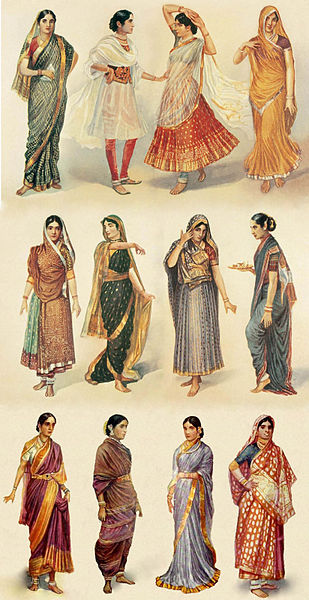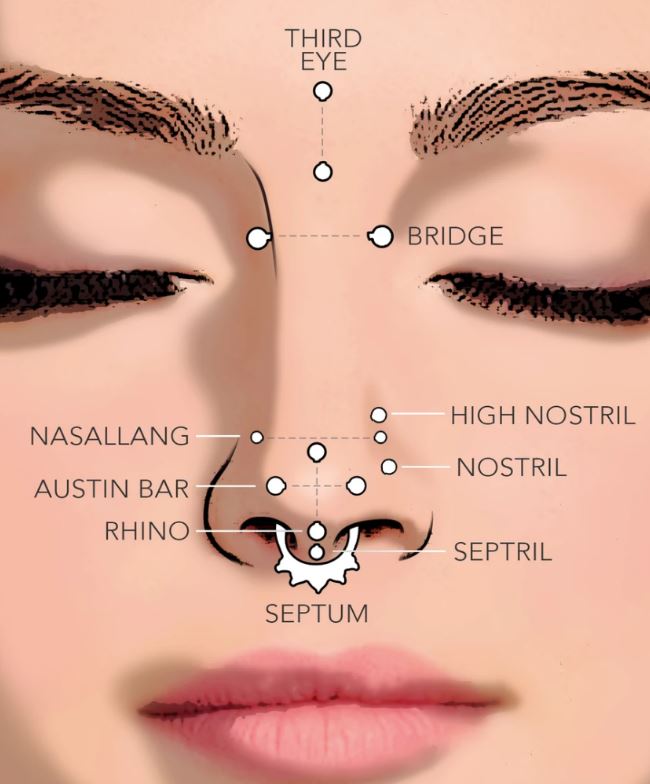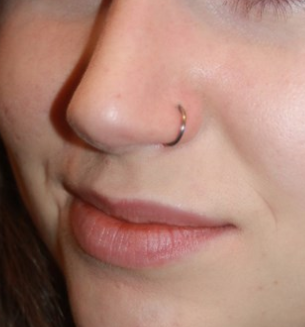Sponsor Ads
Non-China Vape, 510 Cartridges & Battery Device Maker
If you are going for a vape manufacturer out of China we are you best choice. We offer a alternative vape production location with a very competitive price. You can save money by buying directly from us the manufacturer, without any middlemen or extra fees. You can also enjoy discounts for bulk orders and special offers for long term & loyal customers.
We offer small trial orders where you can test the quality and performance of the products before placing a large order. Fast shipping and cheaper shipping cost from Malaysia and Singapore ports. You don't have to wait long to receive your products.
Contact Us!
Contribute for our website Maintenance! We want to keep it free for all visitors.
Trending Best Sellers
Different Styles of Wearing Sari: Being Trendy while keeping the Tradition!
Trending Best Sellers
 |
Different Styles of Wearing Sari? How likely are you to ask the question unless there’s an occasion? Since ancient times, Indian women and girls have been wearing beautiful saris. And many still wear them today, some frequently and others more occasionally. Also spelled "saree," this traditional ethnic Indian feminine attire consists of a long, wide piece of fabric that is artfully draped over and around the woman's body. Although different styles of wearing sari worn by women in several South and Southeastern Asian countries - including Pakistan, Sri Lanka, Malaysia, Bangladesh, to name a few - they are most closely associated with Indian women, perhaps because of their long history in that region. |
In fact, historians believe that different styles of wearing sari was worn in India thousands of years ago. The Silappadhikaram and other works of ancient Tamil poetry, along with Banabhatta's Kadambari, a centuries-old Sanskrit work, describe women wearing exquisitely draped saris. Today, when many Western people think of India, they visualize a beautiful, dark-haired woman wearing a sari.
Different Styles of Wearing Sari: Classic Styles!

here are many different styles of wearing sari India, Sri Lanka, Pakistan, Bangladesh and Nepal.
Here are of the different styles of wearing sari
Nivi sari
Nivi sari styles originally worn in Deccan region; besides the modern nivi, there is also the kaccha nivi, where the pleats are passed through the legs and tucked into the waist at the back. This allows free movement while covering the legs.
Bengali and Odia style is worn without any pleats.
Traditionally the Bengali style is worn without pleats where the sari is wrapped around in an anti-clockwise direction around the waist and then a second time from the other direction. The loose end is a lot longer and that goes around the body over the left shoulder. There is enough cloth left to cover the head as well. The modern style of wearing a sari originates from the Tagore family. Jnanadanandini Devi, the wife of Rabindranath Tagore's elder brother Satyendranath came up with a different way to wear the sari after her stay in Bombay. This required a chemise or jacket (old name for blouse) and petticoat to be worn under the sari and made it possible for women to come out of the secluded women's quarters (purdah) in this attire.
Gujarati/Rajasthani
After tucking in the pleats similar to the nivi style, the loose end is taken from the back, draped across the right shoulder, and pulled across to be secured in the back
Himalayan
Kulluvi Pattu is traditional form of woolen sari worn in Himachal Pradesh, similar variation is also worn in Uttarakhand.
Nepal
Nepal has many with different styles of wearing sari, today the most common is the Nivi drape. The Bhojpuri and Awadhi speaking community wears the sari sedha pallu like the Gujrati drape. The Mithila community has its own traditional Maithili drapes like the madhubani and purniea drapes but today those are rare and most sari is worn with the pallu in the front or the nivi style. The women of the Rajbanshi communities traditionally wear their sari with no choli and tied below the neck like a towel but today only old women wear it in that style and the nivi and the Bengali drapes are more popular today. The traditional Newari sari drape is, folding the sari till it is below knee length and then wearing it like a nivi sari but the pallu is not worn across the chest and instead is tied around the waist and leaving it so it drops from waist to the knee, instead the pallu or a shawl is tied across the chest, by wrapping it from the right hip and back and is thrown over the shoulders. Saris are worn with blouse that are thicker and are tied several times across the front. The Nivi drape was popularized in Nepal by the Shah royals and the Ranas.
Nav-vari
This drape is very similar to that of the male Maharashtrian dhoti, though there are many regional and societal variations. The centre of the sari (held lengthwise) is placed at the centre back, the ends are brought forward and tied securely, then the two ends are wrapped around the legs. When worn as a sari, an extra-long cloth of nine yards is used and the ends are then passed up over the shoulders and the upper body. This style of draping is called as "Nav-vari sari" (Kashta in Konkani). Women in villages of Maharashtra still drape their saris in this manner. The style worn by Brahmin women of differs from that of the Marathas. The style also differs from community to community. This style is popular in Maharashtra and Goa. Nowadays this style has become very famous through Indian cinema and is trending in Maharashtrian weddings.
Madisar
This drape is typical of Iyengar/Iyer Brahmin ladies from Tamil Nadu. Traditional Madisar is worn using 9 yards sari.
Pin Kosuvam
This is the traditional Tamil Nadu style
Kodagu style
This drape is confined to ladies hailing from the Kodagu district of Karnataka. In this style, the pleats are created in the rear, instead of the front. The loose end of the sari is draped back-to-front over the right shoulder, and is pinned to the rest of the sari.
Gobbe Seere
This style is worn by women in the Malnad or Sahyadri and central region of Karnataka. It is worn with 18 molas sari with three-four rounds at the waist and a knot after crisscrossing over shoulders.
Karnataka
In Karnataka, apart from traditional Nivi sari, sari is also worn in "Melgacche" drape, kacche drape which shows nivi drape in front and kacche in back, there are three kacche styles known in Karnataka - "Hora kacche", "Melgacche" and "Vala kacche" or "Olagacche" which is today limited to parts of northern Karnataka, but is rarely worn as every day attire.
Kerala sari style
The two-piece sari, or Mundum Neryathum, worn in Kerala. Usually made of unbleached cotton and decorated with gold or coloured stripes and/or borders. Also the Kerala sari, a sort of mundum neryathum.
Tribal indigenous styles
Often secured by tying them firmly across the chest, covering the breasts.
Kunbi style or denthli
Goan Gauda and Kunbis, and those of them who have migrated to other states use this way of draping sari or kap.
Reference: Different styles of wearing sari
Here's a list of the new trendy different styles of wearing sari:
Belt Style. Drape your saree the normal way and just add a belt that cinches your pallu at the waist. ...
Dhoti Style
Neck Drape Style
Mumtaz Style
Mermaid Style
Pant Style
Butterfly Style
Lehenga Style
Front Pallu Style
Pre-stitched Gown Style
The common perception that a sari is solely a form of traditional, ethnic Indian women's attire is perfectly understandable, although saris are much more than that. In fact, many Western women are now discovering the true beauty of this type of clothing, and in both the Western world and in India, the sari has become more of a fashion statement than anything else, although many Indian women still wear them as a symbol of pride and as a way to show honor and respect for longstanding traditions.
Western women are beginning to wear saris for both casual and formal occasions, and as a family of Indian descent, we're both happy and proud to see this happening. In fact, we have dedicated ourselves to bringing the beauty of this traditional form of dress out from Asia and its traditional roots into the modern, Western world.
But, we feel it's important that women who wear or are considering wearing saris understand the traditional significance, meanings and symbolism behind them. So, we'll describe how to wear a sari and then explain how these garments can give you an insight into traditional Indian culture.
A sari consists of a long strip of unstitched fabric that is ultimately draped around and over a woman's body in one of several specific styles. The length of fabric can be anywhere between four and nine yards long, depending on the style. Although several different styles of wearing sari are possible, most women wrap the sari fabric around their waist and drape the loose end - which is called the pallu and is often gorgeously decorated - loosely over one shoulder. The other, undecorated end of the sari fabric is concealed because it is inside the wrapped portion.
Sari fabric often features vibrant colors, beautiful patterns and stunning embellishments on the pallu and along the lengthwise edges. But, because it is, in the end, a simple length of cloth, sari fabric can be draped and worn in several ways. Some draping styles require longer pieces of fabric than others, and some leave all or a portion of the woman's midriff bare. The bare midriff styles almost certainly trace their origins to ancient Hindu religious beliefs. Ancient Indian traditions and the Natya Shastra (an ancient Indian work which describes clothing and dance forms) consider the navel to be a source of creativity and of life itself, so the midriff is to be left bare when a sari is wrapped.
We know you love sarees! This post covers not just important pointers on how to drape a saree but also talks about different styles of wearing sari that you’d love to try out! We start right from how to tie a saree to how to drape a saree for a wedding! Read this post and fall in love with the saree all over again!
How to Drape a Saree for Beginners | Easy Saree Draping Tutorial
In ancient India, the feminine ideal involved a small waist but a large bust and hips. The sari, worn since those times, may be the perfect type of attire to evoke those ideal womanly characteristics because it exposes and emphasizes a woman's waist while the draping of the fabric also emphasizes her bust.
Saris are very versatile, and depending on how they're draped, with different styles of wearing sari they can be demure or highly evocative. They can be worn for any occasion, casual or formal. They are even becoming increasingly popular as wedding dresses for brides who want to be a bit different and make a fashion statement about their individual sense of style. Although they are a traditional form of Indian attire, their fluid lines and exotic, exquisite style have enabled saris to carve out a place in modern Western society.
We can help you enjoy the incomparable different styles of wearing sari and elegance that only a gorgeous sari can provide. When you wear a sari, you'll also be participating in the fusion of revered ancient Indian traditions with modern Western society.
To the top of this page Different styles of wearing sari.
Comments
What you think?
Recent Articles
-
Riche Niche: Health | Lifestyle | Fashion | Marketing | Technology
Mar 14, 25 09:18 AM
Our Riche Niche blog is the easiest way to stay up-to-date with the latest news, trends and articles published on this site. -
The Therapeutic Potential of Medical Cannabis Vaporization
Aug 05, 24 09:32 PM
The use of medical cannabis has been a subject of much debate and research over the years. With the growing acceptance of cannabis for medical purposes, various methods of administration have been exp… -
Amazon Spring Sale: A Season of Spectacular Savings
Mar 18, 24 08:38 AM
Amazon Spring Sale: A Season of Spectacular Savings -
Understanding Nose Piercing Types: A Guide for Teens
Mar 16, 24 09:19 AM
Explore the rising trend of nose piercings among teenagers, understanding the various types and their cultural implications for a stylish appeal. -
Infected Nose Piercing
Mar 16, 24 09:18 AM
You can expect symptoms of infected nose piercing to resemble any other kind of body piercing infection. -
EMS manufacturing services in Malaysia
Mar 09, 24 10:33 PM
Malaysia is one of the leading countries in Southeast Asia that offers EMS manufacturing services to both local and international clients. -
Laundry Business: The Need for Payment System Upgrades
Mar 08, 24 11:14 AM
Discover the benefits of upgrading your laundry business's payment system. Enhance efficiency, increase profits, and improve customer convenience. -
Nose Peircing Store
Feb 18, 24 02:38 AM
A collection of latest at our nose peircing store. -
How to Choose the Right Coffee Maker for Your Needs
Feb 18, 24 02:12 AM
We'll compare the pros and cons of four common types of coffee makers: drip, French press, espresso, and vacuum. We'll also give you some tips on how to choose the right one based on your preferences… -
Emulate Celebrities with Nose Piercings
Feb 06, 24 08:13 AM
Discover the celebrities with nose piercing and get inspired for your next piercing! From studs to septum rings, our list has it all. Read more! -
Types of Nose Rings
Feb 06, 24 08:11 AM
Types of Nose Rings -
Is my nose piercing ring is sinking in?
Feb 06, 24 08:10 AM
Is my nose piercing ring is sinking in? Or just swollen? -
Dry Herb Vape Pens-Discover the Advantages of Malaysian Made
Feb 04, 24 12:39 PM
Choose our non-China dry herb vape pen for its high production standards, strict quality control, and excellent craftsmanship. -
Trinity Nose Ring A Unique Fashion Statement
Feb 03, 24 08:36 PM
Explore the world of trinity nose rings, a unique piece of jewelry that adds elegance and style to your look. Understand the different types and choose the right one for you. -
Redefining Beauty: The Rise of Nose Piercing Trend in the USA
Feb 02, 24 08:34 AM
Explore the evolution of the nose piercing trend in the USA, from ancient tradition to modern expression of individuality.













